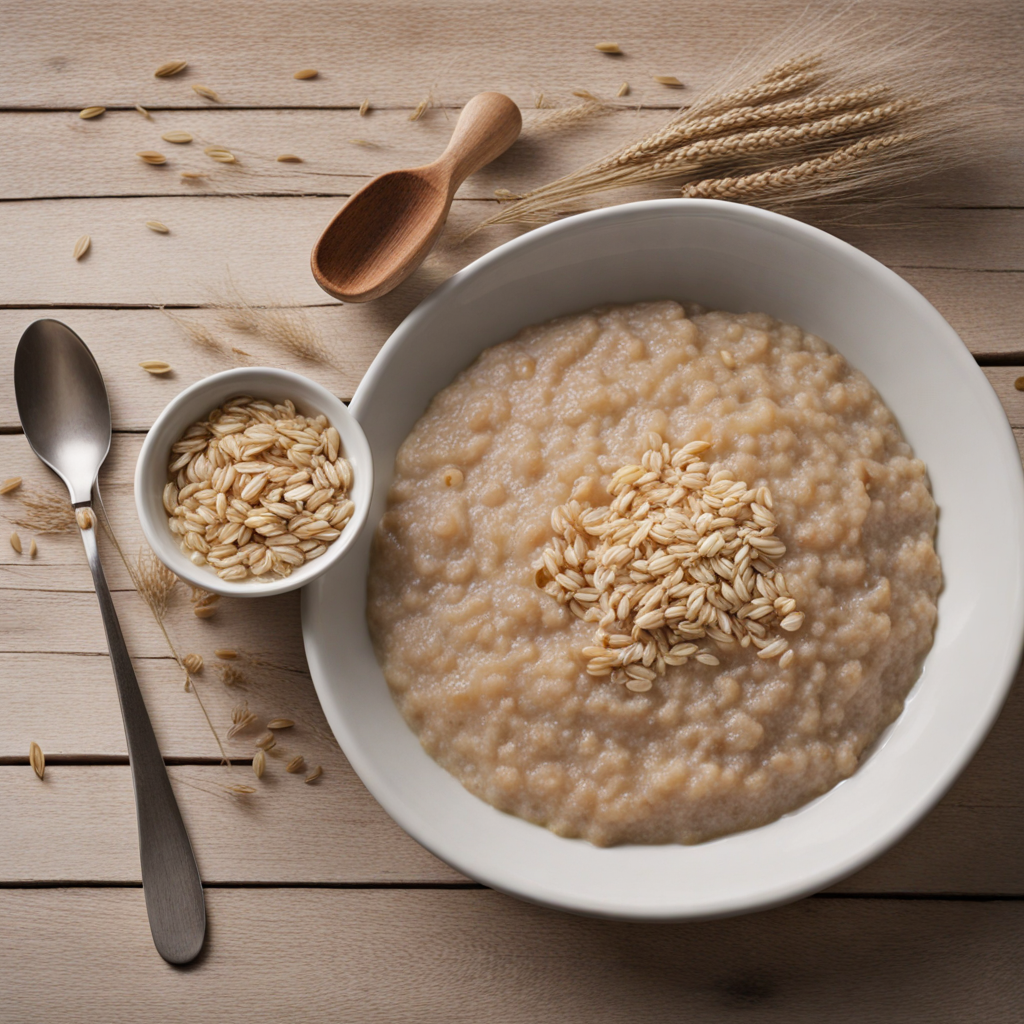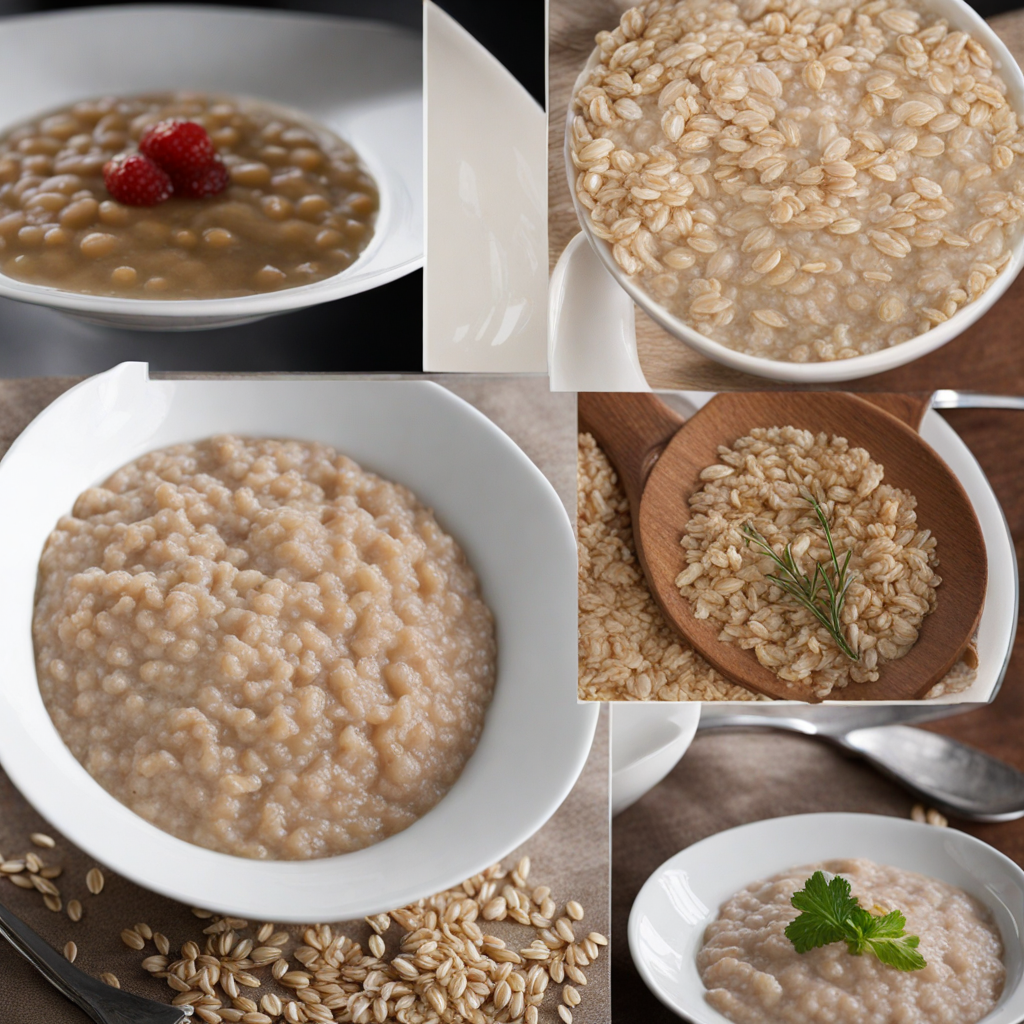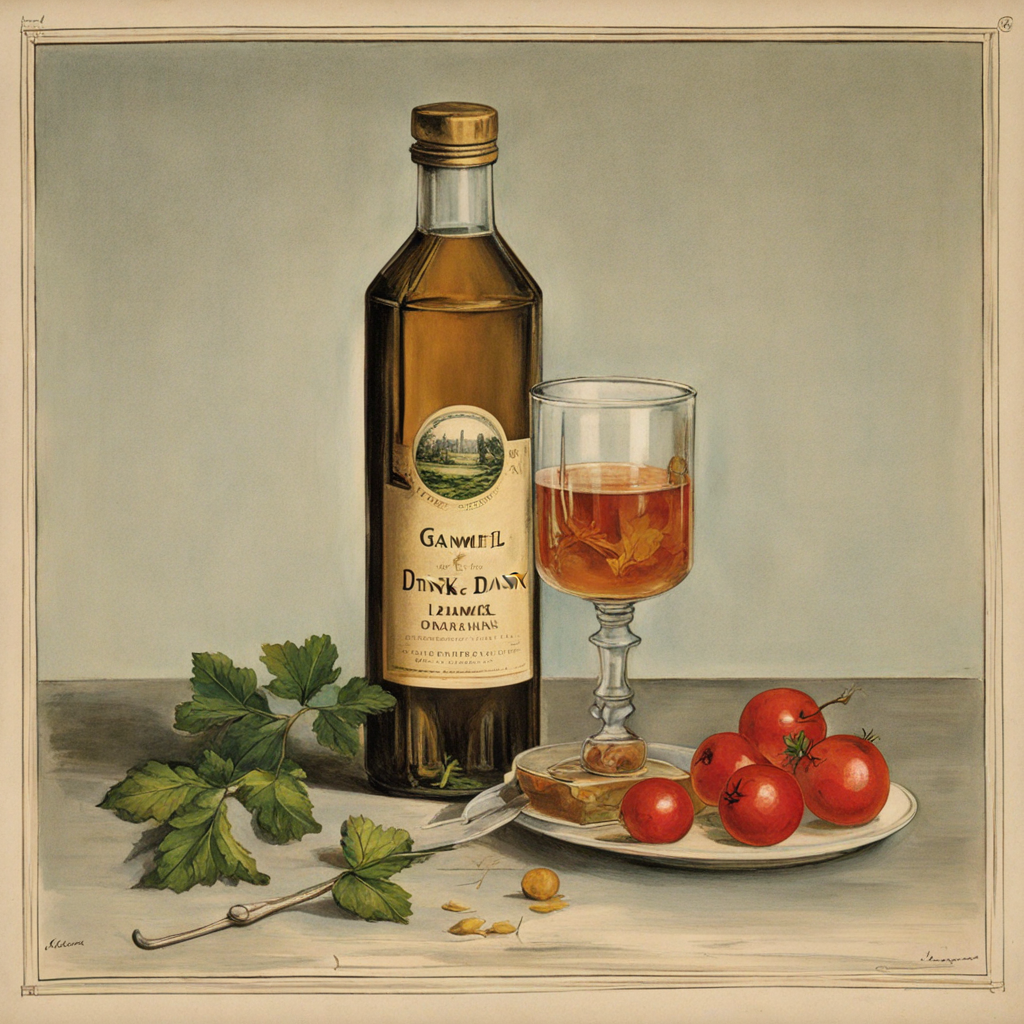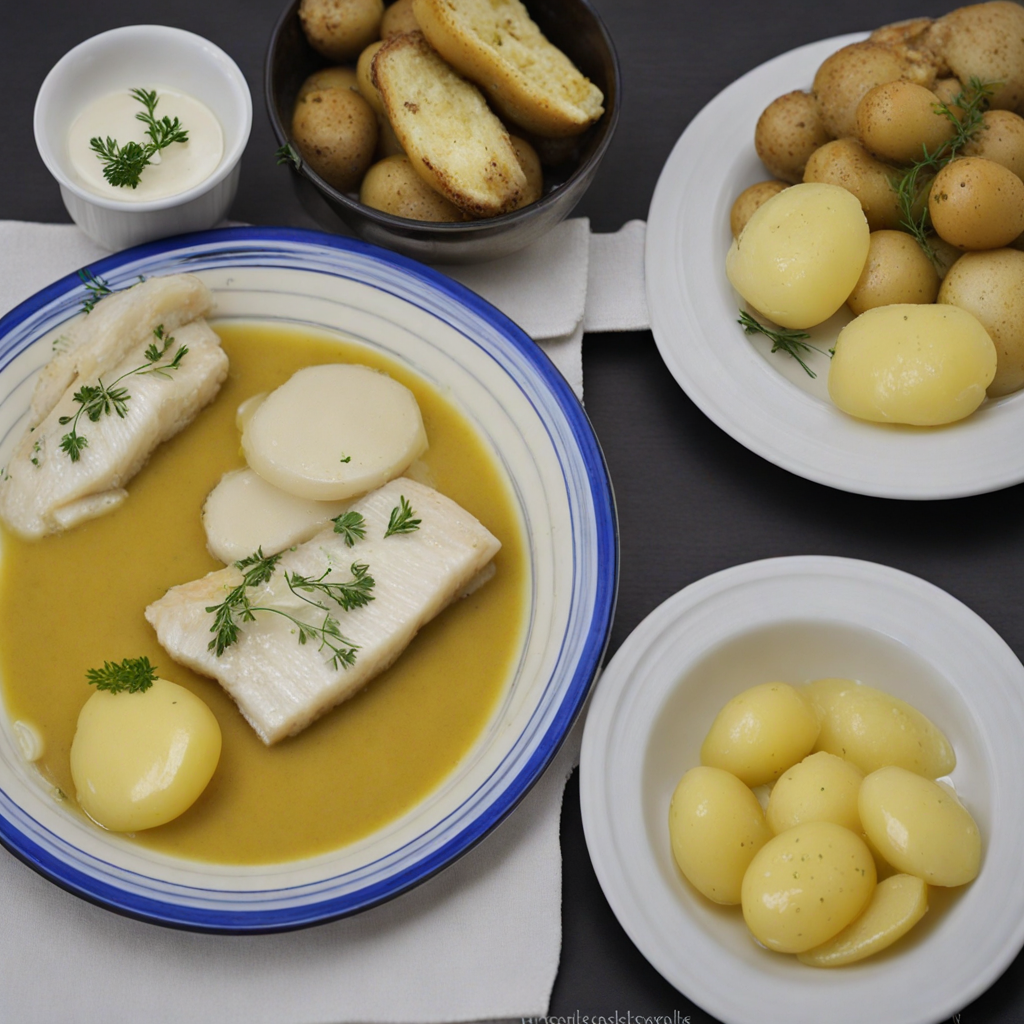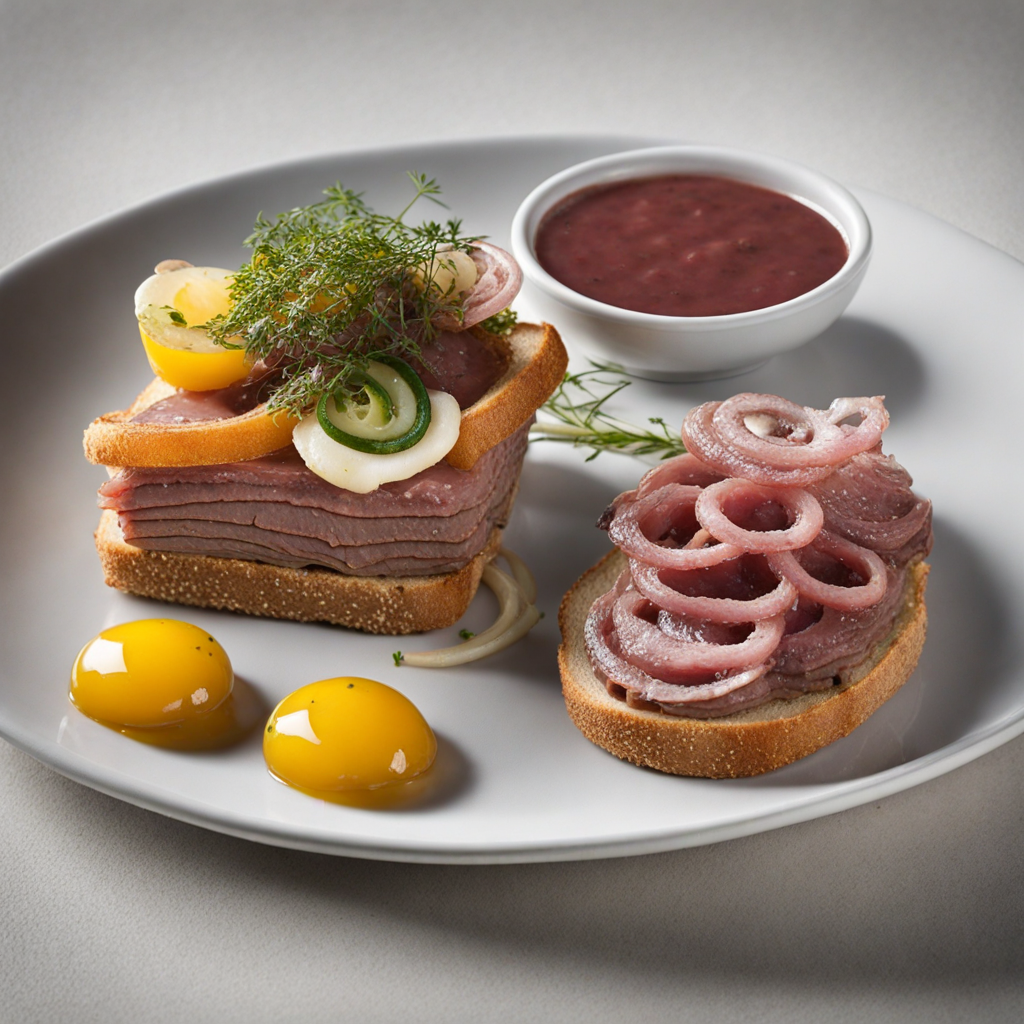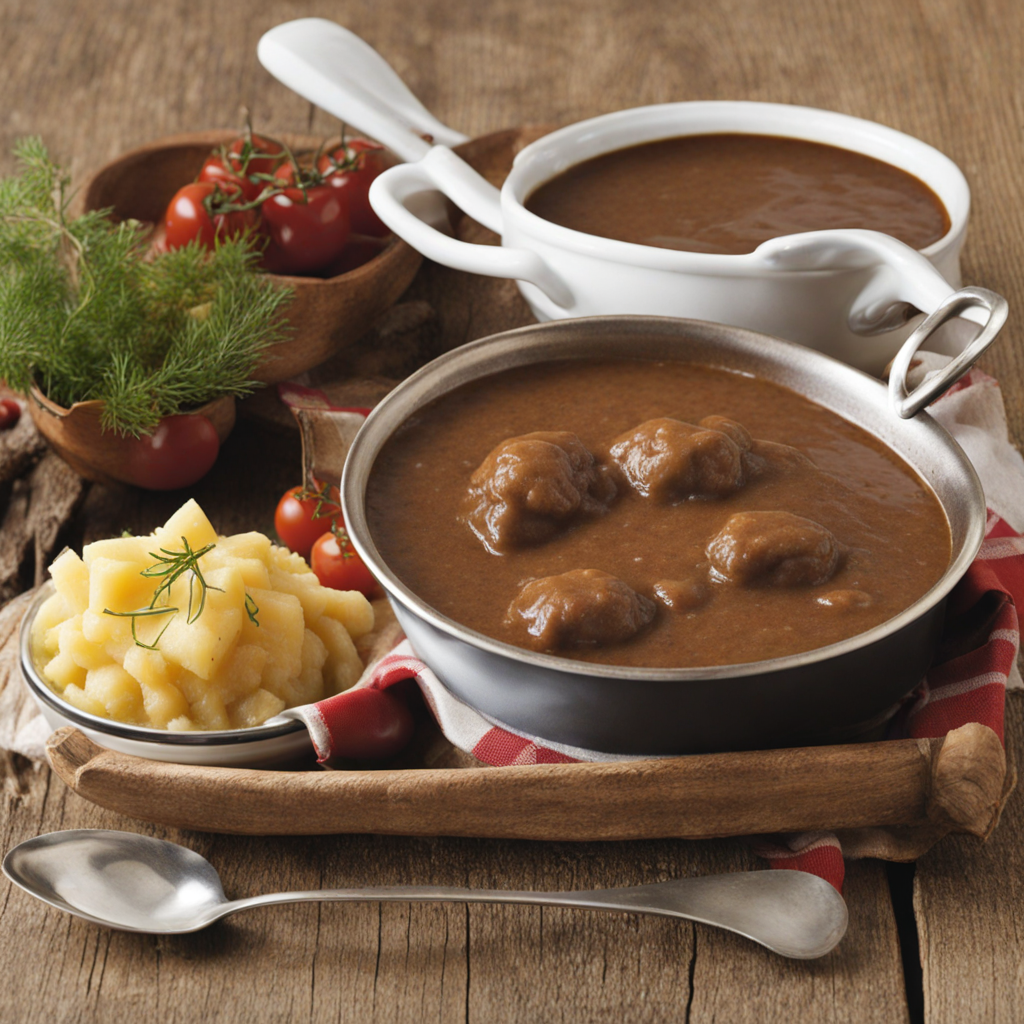Grød
Grød, a quintessentially Danish dish, is a comforting porridge that exemplifies the country's love for simple, wholesome food. Traditionally made from oats, it is cooked slowly with water or milk until it reaches a creamy consistency. The beauty of Grød lies in its versatility; it can be enjoyed as a hearty breakfast or a cozy dinner, providing nourishment and warmth. The base of the porridge is often enriched with a pinch of salt, enhancing the natural flavors of the grains while creating a satisfying, savory backdrop for various toppings. What sets Grød apart is the array of toppings that can elevate this humble dish into a delightful culinary experience. Danes often adorn their porridge with an assortment of ingredients, including fresh fruits like apples and berries, crunchy nuts, or a drizzle of honey or maple syrup for sweetness. Some even opt for a sprinkling of cinnamon or a dollop of yogurt to add a tangy twist. This custom of personalizing Grød allows each bowl to reflect individual tastes and preferences, making it a dish that can be enjoyed in countless ways. In recent years, Grød has gained popularity beyond its traditional roots, with dedicated porridge bars popping up in cities across Denmark. These establishments celebrate the dish by offering gourmet variations, experimenting with flavors and textures. Diners can now savor combinations like almond butter with banana, or even savory versions featuring sautéed vegetables and herbs. This evolution of Grød showcases not only its adaptability but also its potential to surprise and delight the palate, making it a must-try for anyone looking to explore the rich culinary landscape of Denmark.
How It Became This Dish
Grød: The Heart of Danish Comfort Food Grød, the Danish word for porridge, encapsulates not just a dish but a cultural phenomenon that has nourished the Scandinavian landscape for centuries. A staple in the Danish diet, grød has evolved from its humble origins into a beloved symbol of comfort and community, reflecting the agricultural heritage and culinary ingenuity of Denmark. Origins: The Birth of Grød The roots of grød can be traced back to ancient agricultural societies, where grains were among the first cultivated crops. Archaeological evidence suggests that grains such as barley, oats, and rye were domesticated in the Nordic region around 4000 years ago. Early inhabitants cooked these grains with water or milk over an open flame, creating a simple yet nourishing meal that would sustain them through harsh winters. Grød's earliest mentions can be found in Norse sagas and medieval texts, where it was referred to as a basic sustenance for farmers and laborers. This porridge was often made with whatever grains were available, reflecting the seasonal and regional variations in agriculture. It was not only practical but also economical, allowing families to feed themselves with minimal resources. Cultural Significance: More Than Just Food Grød transcended its role as mere sustenance; it became a vital part of Danish culture and tradition. In the rural communities of Denmark, grød was often served during festivals and celebrations, symbolizing abundance and the connection to the land. It was a dish that brought families together, a staple at the breakfast table and a comforting evening meal. In the Christian tradition, grød held particular significance during fasting periods. It was seen as a simple, humble dish that aligned with the values of modesty and self-restraint. The dish was adapted to suit the liturgical calendar, with variations made for special occasions. For example, rice pudding—known as "risengrød"—was often prepared during Christmas, symbolizing warmth and togetherness during the cold winter months. Moreover, grød played a role in Danish folklore and superstition. It was believed that leaving a bowl of porridge out for the nisser, mythical creatures akin to gnomes, would ensure good fortune and a bountiful harvest. This connection to folklore highlights the dish's deep roots in the cultural consciousness of Denmark, where food often intertwines with myth and tradition. Development Over Time: From Rustic to Refined As Denmark transitioned into the modern era, grød underwent significant transformations. The Industrial Revolution in the 19th century brought about changes in food production and consumption patterns. With the rise of cities and urban living, traditional agricultural practices waned, and ready-made meals began to appear on the market. However, grød remained a cherished dish, evolving to meet the needs and tastes of the changing populace. In the 20th century, grød experienced a renaissance. The post-war period saw a resurgence in interest in traditional Danish foods as a reaction against the increasing globalization of cuisine. Home cooks and professional chefs alike began to experiment with different grains and flavors, giving rise to a variety of grød recipes that reflected contemporary tastes while honoring historical traditions. Modern interpretations of grød highlight its versatility. Chefs began to incorporate a range of ingredients, from exotic spices to seasonal fruits, elevating this humble dish into gourmet territory. Today, one can find everything from classic oatmeal to innovative variations featuring quinoa, chia seeds, and even savory iterations made with vegetables. In recent years, grød has made a notable comeback in Denmark’s culinary scene, aided by the global trend of health-conscious eating. With the rise of the "porridge bars" in Copenhagen, grød has established itself as a trendy, wholesome option for breakfast and beyond. These establishments offer a variety of toppings and flavor profiles, catering to both traditionalists and adventurous eaters. This resurgence has not only revitalized interest in grød but has also encouraged a new appreciation for locally sourced ingredients and the simplicity of wholesome, home-cooked meals. Grød Today: A Dish of Global Influence In the 21st century, grød stands as a testament to the enduring appeal of comfort food. It has permeated global culinary culture, inspiring similar dishes around the world. Variations of porridge exist in many cultures—such as oatmeal in the United States, congee in China, and polenta in Italy—each reflecting local ingredients and traditions. Grød's adaptability and simplicity make it a beloved dish across continents, demonstrating the universal need for nourishing food that brings people together. Moreover, grød has become a canvas for culinary creativity. Chefs and home cooks alike experiment with flavors, textures, and presentation, resulting in a wide array of interpretations that range from traditional to avant-garde. This evolution showcases the dish's versatility, appealing to modern palates while retaining its historical roots. In Denmark, grød is celebrated not just for its flavor and nutrition, but as a cultural touchstone. It embodies the spirit of hygge—a Danish concept that emphasizes coziness, comfort, and contentment—making it a perfect embodiment of the Danish lifestyle. Whether enjoyed on a chilly winter morning or as a comforting late-night snack, grød is a dish that evokes nostalgia and warmth. Conclusion: The Legacy of Grød The history of grød is a rich tapestry woven with threads of agriculture, tradition, and culinary innovation. From its origins as a simple porridge made from locally grown grains to its modern iterations that embrace global influences, grød reflects the resilience and adaptability of Danish cuisine. It serves as a reminder of the importance of community, the joy of sharing a meal, and the comfort that comes from a bowl of warm porridge. As Denmark continues to embrace its gastronomic heritage while looking to the future, grød remains a cherished dish that nourishes both body and soul. It is a culinary emblem of Denmark, inviting everyone to partake in its history, flavors, and the warmth of shared experiences around the table.
You may like
Discover local flavors from Denmark


